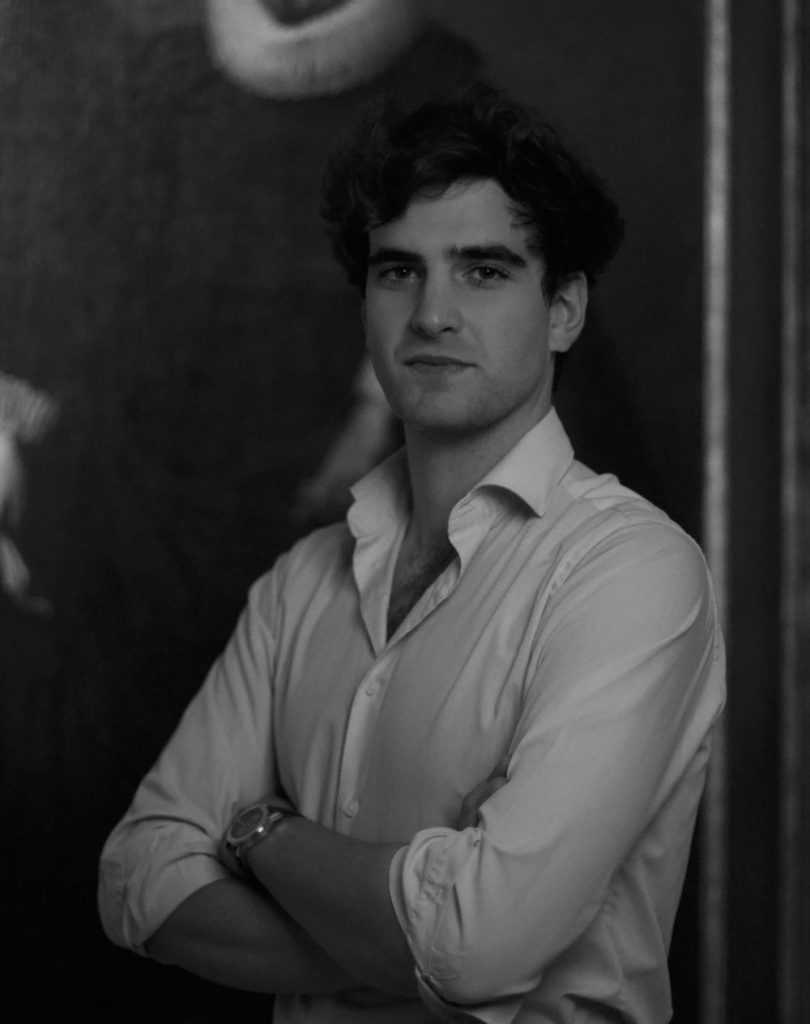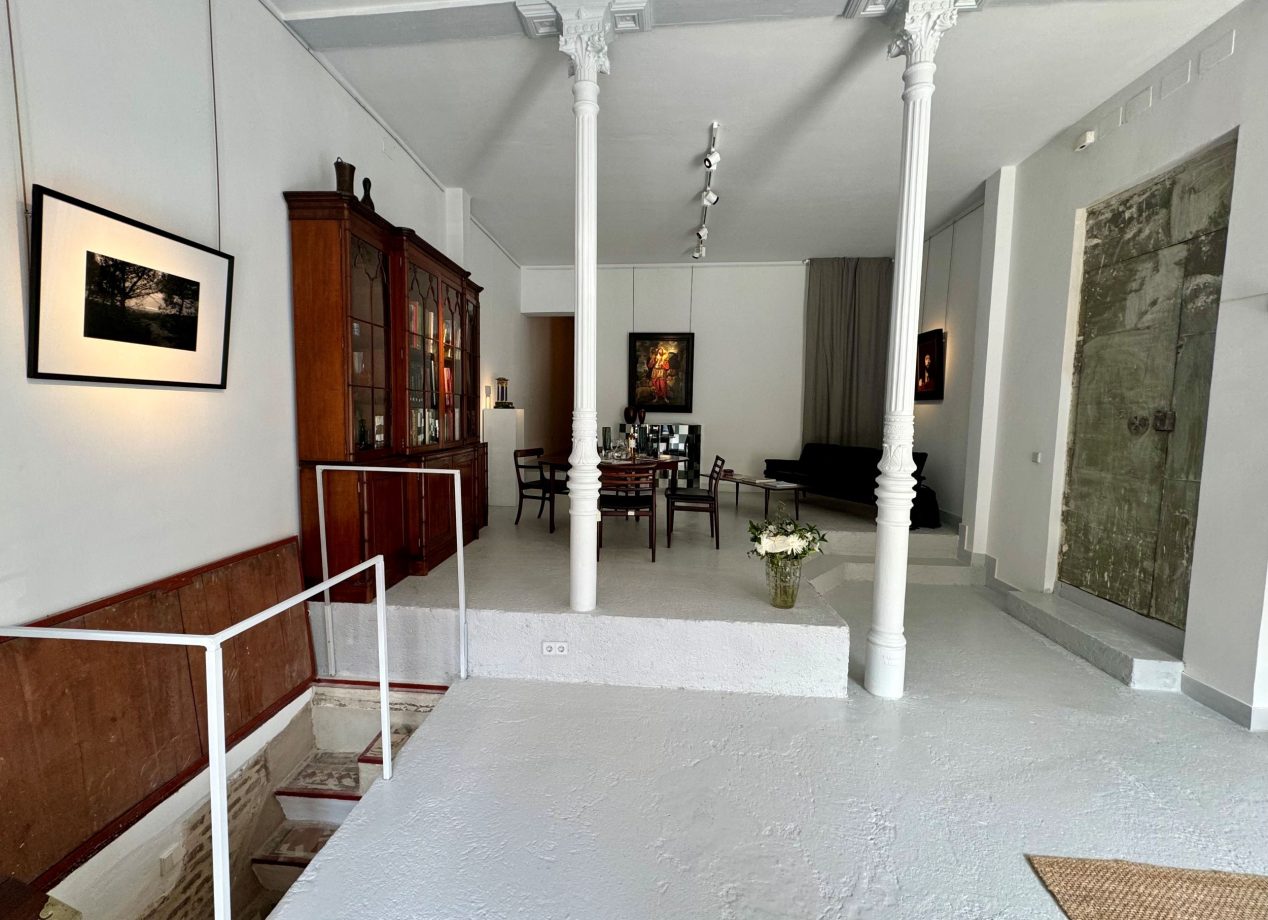Magalhães & Santos is a gallery specializing in Old Masters and 20th-century design, based in the vibrant Malasaña neighborhood of Madrid. We spoke to co-founder Enrique Santos about the power of short courses and how Magalhães & Santos frames Old Master paintings in a contemporary context.
 Can you briefly describe your background and what led you to enroll in a short course at Sotheby’s Institute of Art?
Can you briefly describe your background and what led you to enroll in a short course at Sotheby’s Institute of Art?
I come from a family of art dealers in Córdoba, in the south of Spain. It wasn’t really until I started working in London during summer that I truly reencountered my passion for art. I was studying law at Carlos III University in Madrid when I began to visit London frequently. I quickly met some dealers who introduced me to the art market. I used to attend all Sotheby’s Old Masters auctions during the summer and when I heard about the courses at Sotheby’s Institute of Art, I didn’t hesitate to enroll.
How would you describe your Sotheby’s Institute of Art experience?
It was a wonderful experience. I met people from every corner of the world with diverse backgrounds. The interesting thing was that the vast majority were not art professionals, but shared a common interest in art. We still keep in touch as good friends. The sessions were very active, featuring numerous visits to museums in London and its surroundings.
How did the Art and Its Markets in-person short course shape your understanding of the art ecosystem?
It was fascinating to discover how the modern and contemporary art markets operate, which was completely different from what I was used to. We studied Sotheby’s auctions, comparing expectations to the reality and truth of the market. We also explored the importance of effective marketing campaigns to reach broader audiences and potential buyers, who might never have considered acquiring such diverse pieces for their collections.
What topics were addressed during the Art and Its Markets course, and what were the key takeaways for you?
Although my speciality is Old Masters, discussing modern and contemporary artists with my colleagues and professors broadened my perspective on the ever-evolving fashion in art. Always rooted in the masters of the past, starting in ancient civilizations, the art world is cyclical and adapts to contemporary lifestyles. I wrote my final study on José de Ribera, including a painting featured in the Old Masters Evening Sale at that time. I learned to study a painting to determine its uniqueness, focusing not on the artist’s name, but on the quality of the canvas itself.
Who would you recommend participate in this course?
Definitely anyone interested in entering the art market, regardless of their artistic field or taste. London during the summer is bustling with activity, including London Art Week, summer auctions, and temporary exhibitions. It’s an extraordinary opportunity to immerse oneself in the real art market.
In what ways did interacting with art world experts and participating in day trips enrich your experience of the course?
When starting in a multifaceted sector such as the art world, you need support for a didactic introduction, as it can be overwhelming with its myriad possibilities. The professors were constantly following up with each student, condensing a solid syllabus into just four weeks. Additionally, the day trips were incredibly enriching, visiting auctions, museums, foundations, and galleries.
Can you tell us about your journey in becoming an MA professor?
It was something unexpected. I had never considered teaching, but it is one of the most fulfilling experiences I have had. After graduating, I was invited to join the MA of Art Market Law at Universidad Carlos III and later the MBA of Art Market at Universidad CEU San Pablo. In my lectures, I strive to stay true to reality by using case studies from my own experiences. I aim to help students find their place in the art ecosystem, leveraging their skills and strengths.
What inspired you to open a gallery in Madrid, and what are your goals for this new venture?
I always envisioned opening my own business, but it was at the end of last year, together with my good friend and business partner, Friedrich Magalhães, that we decided it was time. We wanted Magalhães & Santos to be a gallery focussed on showing Old Masters in a modern setting. We source furniture to complement our paintings, rather than the other way around. Our main goal is to promote Spanish culture and arts, reviving forgotten Masters and presenting them in their rightful context. This was exemplified in our collaboration with the Burgos and Cuenca cathedrals, where we showcased our discoveries in the artists' hometowns. Many notable Spanish Old Masters were discovered in the 19th century and only then was the Spanish School recognized.
How do you see the role of culture as a driver of community building in the art market, particularly in a vibrant city like Madrid?
Our gallery is located in Malasaña, a renowned artistic hub. We are surrounded by Madrid’s old town and many historic sites, such as ‘Plaza Dos de Mayo,’ where the civilian uprising against the French occupation began in 1808. Each building in our neighborhood has a plaque honoring famous artists who lived there, making it a very special location. Madrid is booming and we wanted to be part of this. The Hispanic community worldwide is gathering in this city, creating a rich blend of people with a shared cultural background. Besides its old tapas and sherry taverns, the city boasts a rich cultural and gastronomic scene, making it one of the most desirable cities in the world. It’s an exciting project for us.
